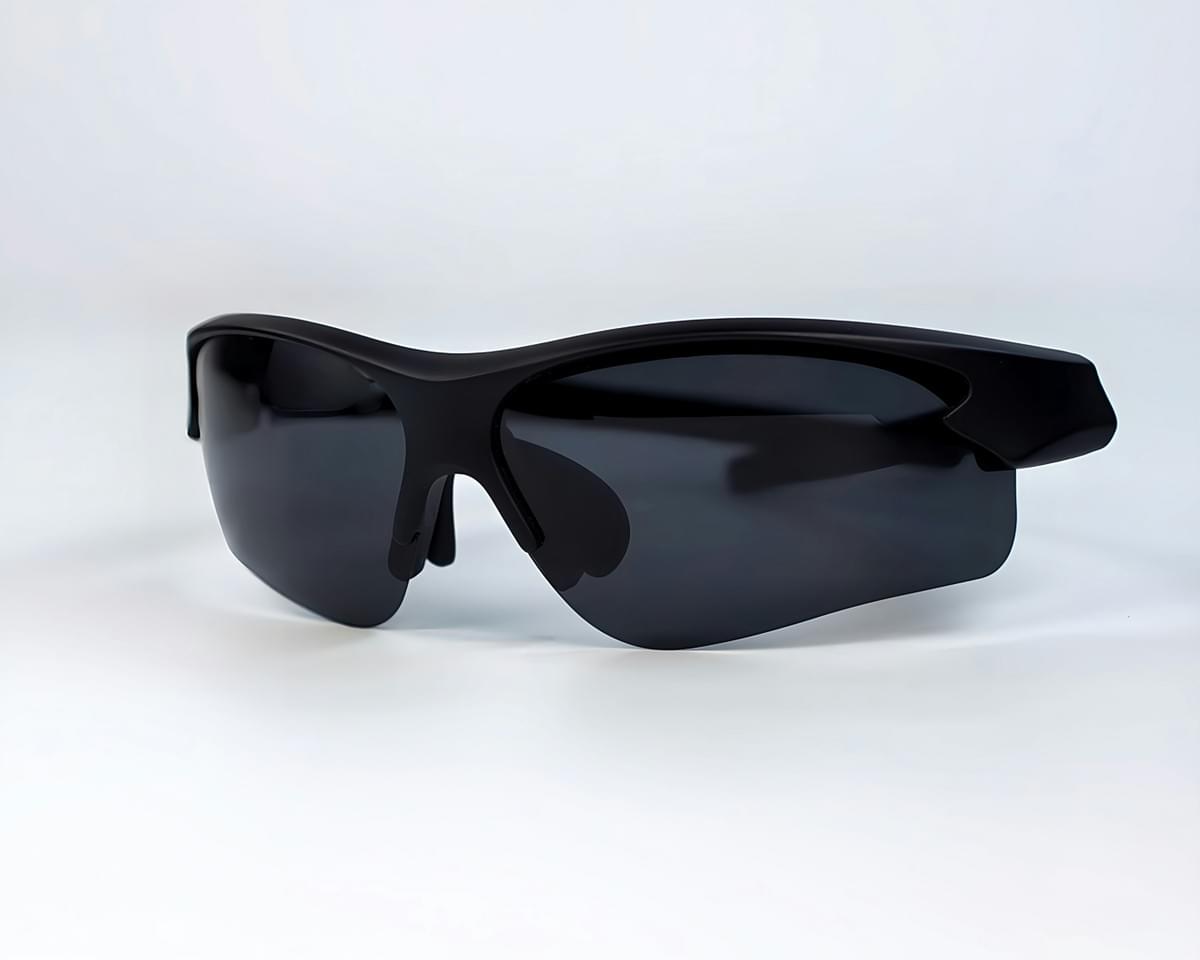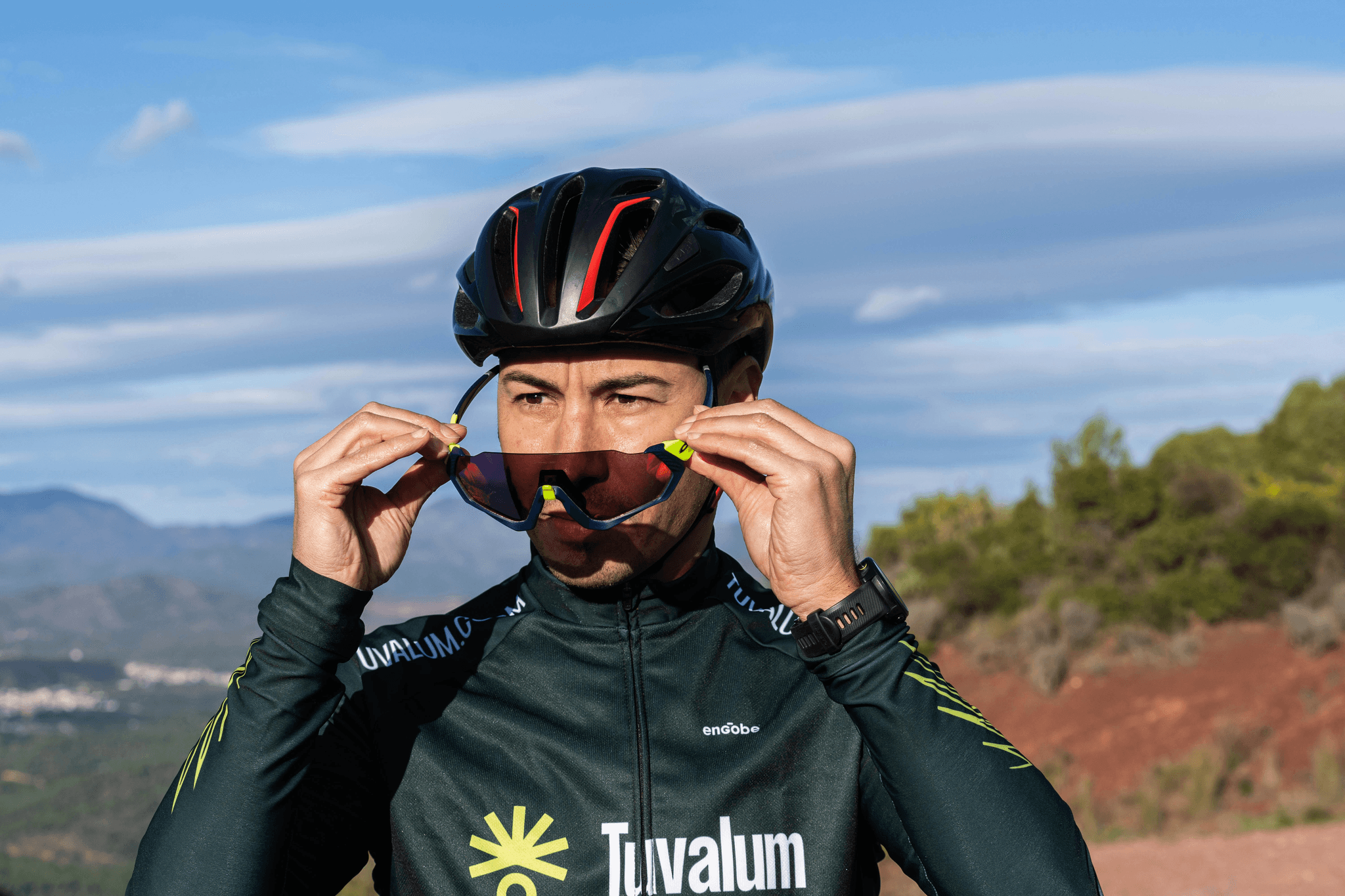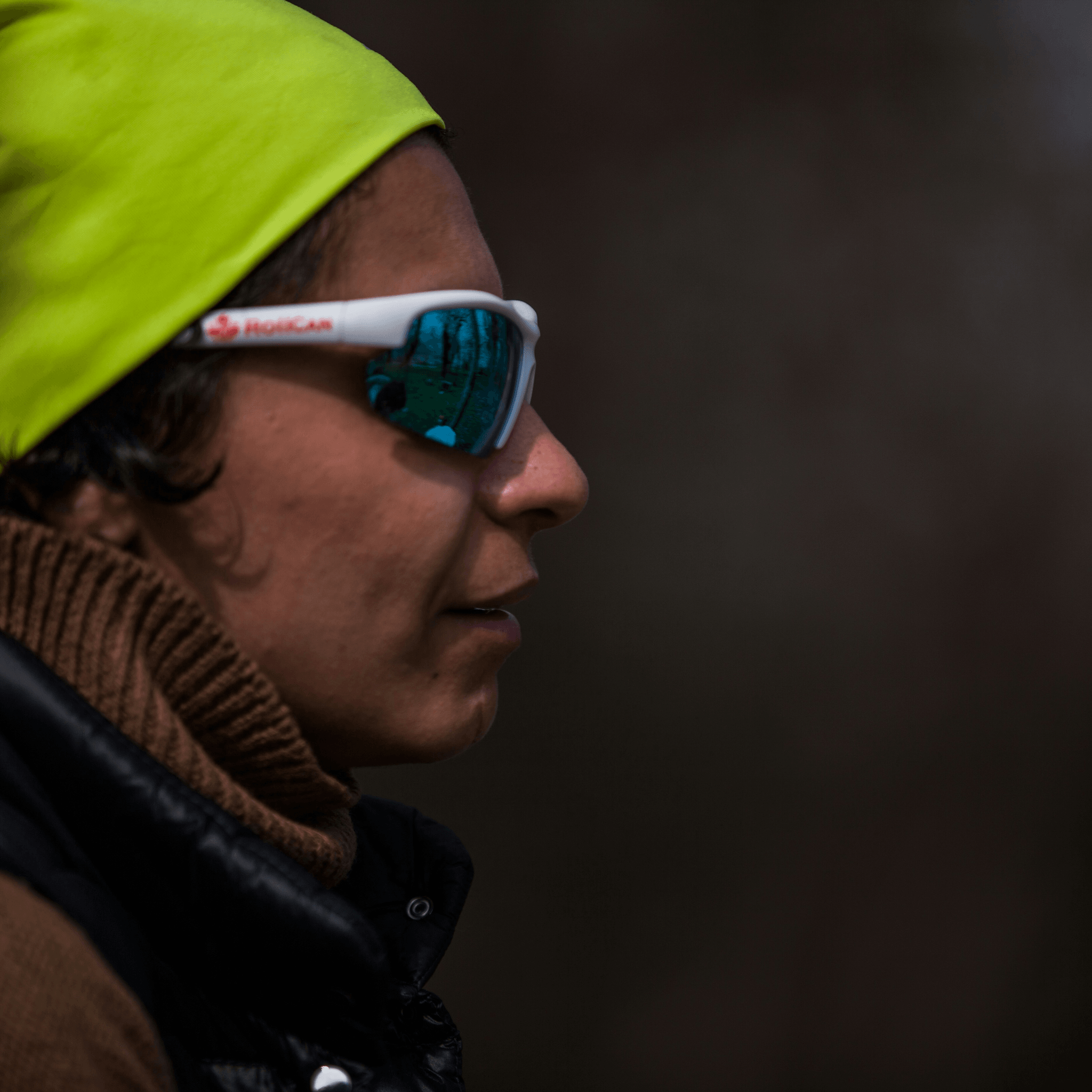Introduction
This is especially true for athletes who rely on clear vision while navigating fast-paced environments. Progressive lenses are becoming increasingly popular among sports enthusiasts, providing a seamless transition between different focal lengths, which is crucial for activities that require both near and far vision.
Understanding Progressive Lenses in Sports
Progressive lenses offer a unique solution for athletes by allowing them to see clearly at various distances without the need for multiple pairs of glasses. Unlike traditional bifocals or single vision lenses, progressive lenses provide a gradual change in lens strength from the top to the bottom of the lens. This feature is particularly beneficial in sports where depth perception and quick focus adjustments are essential, such as cycling or running.
The Role of Prescription Cycling Glasses
Prescription cycling glasses take this concept even further by integrating progressive lens technology specifically designed for cyclists' needs. These glasses not only correct vision but also protect against wind, debris, and harmful UV rays while riding. With prescription cycling glasses featuring progressive lenses, cyclists can maintain optimal focus on the road ahead while easily reading their bike's computer or navigating maps.
Progressive Lenses Versus Other Types
When comparing progressive lenses with other types like bifocals and single vision options, it's clear that each has its own set of advantages and disadvantages for sports use. Bifocal lenses may provide quick access to near-vision but can limit peripheral clarity; single vision offers simplicity but lacks versatility across varying distances. In contrast, progressive lenses deliver a comprehensive visual experience that accommodates athletes’ diverse sight requirements during dynamic activities.
What Are Progressive Lenses Sunglasses?

These innovative lenses combine multiple vision prescriptions into a single lens without the visible lines found in bifocals. This seamless transition allows athletes to see clearly at various distances, which is crucial for performance in activities like cycling and running.
Definition and Functionality
Progressive lenses are designed to provide gradual changes in lens strength, allowing users to focus on near, intermediate, and distant objects effortlessly. Unlike traditional bifocals or single vision lenses, progressive sunglasses offer an all-in-one solution for those who need different prescriptions while engaging in sports. For instance, prescription cycling glasses with progressive lenses enable cyclists to read their bike computer while still keeping an eye on the road ahead.
Advantages for Athletes
The advantages of using progressive lenses sunglasses extend far beyond just convenience; they can significantly enhance athletic performance. Athletes benefit from improved depth perception and clarity at various distances, which is essential for quick decision-making during competitions. Furthermore, wearing progressive transition lenses can help reduce eye strain during long hours of activity outdoors—perfect for those marathon training sessions or weekend rides.
How They Differ from Other Lenses
So how do progressive lenses stack up against other options like bifocal or single vision? While bifocal lenses have distinct lines separating different vision zones—which can be distracting—progressive lenses provide a smoother visual experience without interruptions. Single vision lenses may work well for specific tasks but lack the versatility needed for dynamic sports scenarios where quick shifts in focus are necessary. This flexibility makes them an ideal choice when considering Bifocal vs. Progressive vs. Single Vision: Which is Better for Sports?
Bifocal vs. Progressive vs. Single Vision: Which is Better for Sports?

Comparison of Lens Types
Bifocal lenses feature two distinct optical zones, typically separated by a visible line, allowing wearers to see both near and far distances. In contrast, progressive lenses provide a smooth transition between multiple prescriptions without any lines, offering a more natural viewing experience—ideal for dynamic sports environments. Single vision lenses focus on one distance only (either near or far), making them suitable for athletes who require correction in just one area.
Pros and Cons for Different Sports
When considering Bifocal vs. Progressive vs. Single Vision: Which is Better for Sports?, it's essential to weigh the pros and cons of each type of lens based on your sport of choice. For instance, progressive lenses are fantastic for cyclists who need to shift their gaze from the road ahead to their bike’s computer; however, they may take some time to adjust to during high-speed rides. On the other hand, bifocals can be cumbersome in fast-paced sports like basketball or soccer due to their abrupt transition between zones.
Single vision lenses offer clarity but lack versatility; they work well in straightforward scenarios like running or swimming but may not accommodate varied sight needs during complex activities like mountain biking or triathlons where quick focus changes are necessary.
Recommendations for Specific Activities
For cycling enthusiasts looking at prescription cycling glasses, progressive lenses are often recommended due to their adaptability while navigating different terrains and speeds—making them a top choice among serious cyclists. Meanwhile, if you're into precision sports like archery or shooting where focus stability is critical, single vision lenses might serve you better by providing a consistent view without distractions from multiple focal points.
In team sports such as soccer or basketball where rapid movements occur frequently, consider using single vision glasses that allow quick reactions without the adjustment period required by bifocals or progressives—ensuring you stay at the top of your game!
How to Wear Progressive Lenses for Sports Without Issues

However, with the right approach and mindset, you can seamlessly integrate these lenses into your athletic routine, ensuring that your vision remains sharp and clear during every activity. Whether you're cycling down a winding path or sprinting on the track, knowing how to effectively wear these lenses is crucial for optimal performance.
Tips for Adjusting to New Lenses
Adjusting to progressive lenses can take some time, especially if you're new to them. Start by wearing your prescription cycling glasses in low-stress environments before hitting the trails or the field; this will help your eyes acclimate without added pressure. Gradually increase the intensity of your activities as you become more comfortable with how the lenses perform in different situations.
Another helpful tip is to keep your head still while looking around; this technique allows you to use the correct part of the lens designed for distance or near vision without straining your neck or eyes. Additionally, be patient with yourself—it's normal for it to take a week or two before you feel completely at ease with progressive lenses. Remember that adjusting is part of the journey toward enjoying all the benefits they offer.
Ensuring Comfort During Activity
Comfort is key when engaging in any sport while wearing progressive lenses. Make sure that your eyewear fits snugly but comfortably; poorly fitted glasses can lead to distractions and even headaches during intense physical activities. Consider investing in anti-slip nose pads or temple grips specifically designed for sports eyewear, which can help keep those prescription cycling glasses securely in place.
Moreover, ensure that you’re choosing frames that are lightweight yet durable—this combination will help reduce any discomfort during long hours of wear while maintaining functionality under various conditions. If you're participating in outdoor sports, look into best progressive transition lenses for sports that adapt quickly between light and dark environments; this feature will enhance both comfort and visibility as conditions change.
Common Misconceptions Debunked
One common misconception about wearing progressive lenses is that they aren’t suitable for high-impact sports due to potential distortion at different viewing angles. In reality, advancements in lens technology have made it possible for athletes to enjoy clear vision without compromising safety during their activities—progressive lenses are designed specifically with athletes' needs in mind!
Another myth suggests that switching from bifocal vs. progressive vs. single vision means sacrificing clarity when performing fast-paced movements; however, many users report improved peripheral vision and depth perception thanks to their multifocal design—a game-changer on the field! Lastly, many people fear transitioning from traditional glasses might mean dealing with constant adjustments; once you've adapted properly through practice and patience, you'll find smooth transitions become second nature.
Best Progressive Transition Lenses for Sports

Progressive transition lenses are particularly beneficial for athletes who need clear vision at varying distances while engaging in dynamic activities. Whether you're cycling through scenic trails or sprinting on the track, understanding what to look for in these lenses is crucial.
Features to Look For
When choosing the best progressive transition lenses for sports, there are several key features you'll want to consider. First and foremost is lens clarity; you need optics that provide sharp vision across all zones—near, intermediate, and far—without distortion. Additionally, look for lightweight materials that offer durability and impact resistance, essential qualities when you're out on your bike or playing a fast-paced game.
Another important feature is UV protection; ensuring your eyes are shielded from harmful rays is crucial during outdoor activities. Anti-fog coatings can also be beneficial, especially when transitioning between different temperatures while exercising. Finally, consider photochromic capabilities that allow the lenses to adapt to changing light conditions seamlessly; this feature enhances visibility without needing multiple pairs of glasses.
Top Rated Brands to Consider
Several brands stand out when it comes to high-quality progressive transition lenses suitable for sports enthusiasts. Oakley offers a range of prescription cycling glasses designed specifically for athletes, combining style with functionality and durability that can withstand rigorous activities. Similarly, Maui Jim provides exceptional polarized options that reduce glare while enhancing color contrast—perfect for outdoor sports.
Another brand worth mentioning is Ray-Ban; their progressive sunglasses not only deliver great aesthetics but also advanced lens technology tailored for active lifestyles. Additionally, Zeal Optics focuses on eco-friendly materials without sacrificing performance or visual clarity—ideal if you're environmentally conscious while pursuing your sporting passions. Each of these brands brings something unique to the table regarding optical innovation and athletic performance.
Aisen Optical: Your Source for Quality Eyewear
If you're searching for top-notch progressive transition lenses tailored specifically for sports, Aisen Optical should be at the top of your list! They specialize in providing prescription cycling glasses that cater to various athletic needs without compromising quality or comfort. With an impressive selection of frames and customizable lens options available, Aisen Optical ensures you find eyewear perfectly suited to your active lifestyle.
Plus, their commitment to customer satisfaction means you can expect expert guidance throughout your selection process—from understanding What Are Progressive Lenses Sunglasses? to navigating Bifocal vs. Progressive vs. Single Vision: Which is Better for Sports? The knowledgeable team at Aisen Optical will help you understand how best to Wear Progressive Lenses for Sports Without Issues, ensuring you maximize both performance and enjoyment during every activity.
Do Progressive Lenses Work for Sports?

When it comes to sports eyewear, the question of whether progressive lenses are effective often arises. Many athletes are discovering that these lenses can provide a versatile solution for their vision needs while engaging in various activities. From cycling to running, progressive lenses offer a unique blend of functionality and comfort, making them an appealing choice for those who require prescription cycling glasses.
Real-World Experiences from Athletes
Athletes who have made the switch to progressive lenses often rave about their improved performance on the field or track. For instance, a competitive cyclist shared that using progressive transition lenses allowed him to see clearly at all distances without needing to switch between multiple pairs of glasses. This seamless vision adjustment not only enhanced his focus but also boosted his confidence during races, proving that progressive lenses can indeed work wonders in sports settings.
Another athlete, a marathon runner, noted how wearing prescription cycling glasses with progressive lenses helped her maintain clarity while navigating varying terrains. Instead of struggling with bifocal or single vision options that limited her field of view, she found the adaptability of progressive lenses invaluable. These real-world experiences highlight how athletes benefit from the versatility and convenience that come with these advanced lens designs.
Case Studies of Successful Use
Several case studies illustrate how athletes across different sports have successfully integrated progressive lenses into their routines. One notable example is a triathlete who utilized best progressive transition lenses for sports during competitions. By eliminating the need for multiple pairs of glasses—one for swimming, one for cycling, and another for running—she was able to streamline her gear and focus solely on performance.
In team sports like soccer and basketball, players have reported enhanced peripheral vision thanks to their prescription cycling glasses featuring progressive designs. This expanded field of view allows them to better anticipate plays and react swiftly during games—a crucial advantage when fractions of a second can determine victory or defeat.
Expert Opinions on Performance
Experts in sports vision agree that there is significant merit in using progressive lenses for athletic pursuits. Optometrists specializing in sports eyewear emphasize how these lenses cater to varying visual demands encountered during physical activity—from reading gauges on bicycles to spotting distant opponents on the field. They argue that when comparing bifocal vs. progressive vs. single vision options, athletes who choose progressives often experience fewer visual interruptions.
Moreover, coaches and trainers advocate for incorporating high-quality eyewear like prescription cycling glasses into training regimens as they enhance overall performance by reducing eye strain and improving depth perception—all critical elements in competitive environments. With increasing advancements in lens technology tailored specifically for athletes’ needs, it's clear that Do Progressive Lenses Work for Sports? is no longer just a question but rather an affirmation supported by both athlete testimonials and expert insights.
Conclusion
In the fast-paced world of sports, having the right eyewear can make all the difference. Progressive lenses have emerged as a versatile solution that caters to the unique needs of athletes, blending functionality with comfort. As we’ve explored throughout this guide, understanding how progressive lenses work and their advantages over bifocal and single vision options is essential for enhancing performance.
Key Takeaways on Progressive Lenses
Progressive lenses sunglasses offer a seamless transition between different vision zones, making them ideal for athletes who require clarity at various distances. Unlike bifocal or single vision lenses, progressive options eliminate the visible lines that can be distracting during sports activities. When considering prescription cycling glasses or any active eyewear, it’s crucial to evaluate how these lenses can enhance your performance while providing comfort and style.
Final Thoughts on Sports Eyewear
The right pair of sports sunglasses is not just about UV protection; it’s about optimizing your visual experience during every activity. Whether you’re cycling down a winding road or hitting the trails, understanding how to wear progressive lenses for sports without issues ensures you stay focused on your game rather than your eyewear. With advancements in technology and design, athletes now have access to some of the best progressive transition lenses for sports that cater specifically to their dynamic needs.
The Future of Sports Sunglasses at Aisen Optical
At Aisen Optical, innovation continues to drive our commitment to quality eyewear solutions tailored for athletes. We believe that as sports evolve, so should the technology behind sports sunglasses—especially when it comes to prescription cycling glasses designed with performance in mind. As we look ahead, our goal remains clear: provide cutting-edge eyewear that not only meets but exceeds athletes' expectations while embracing the latest trends and technologies in lens design.
